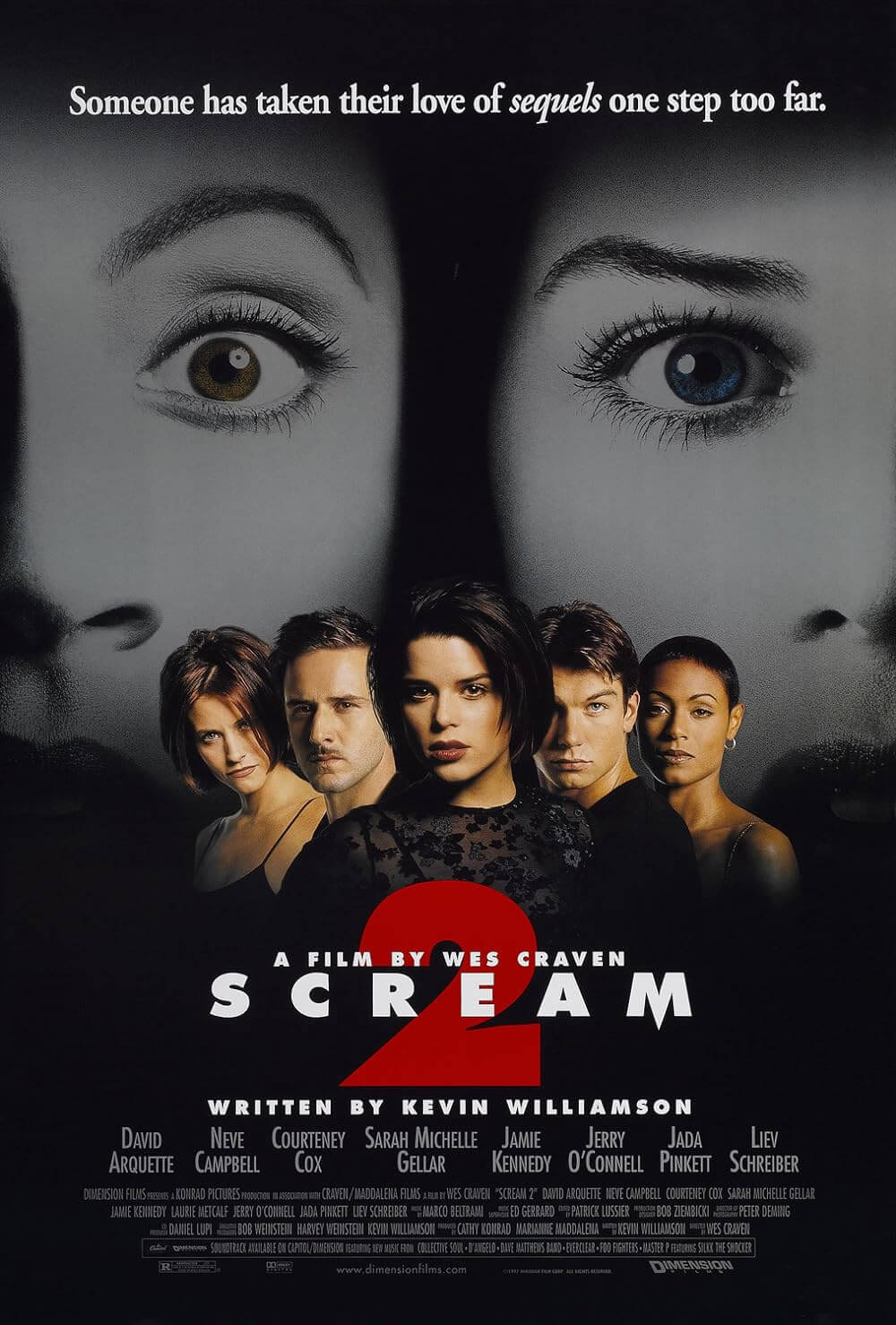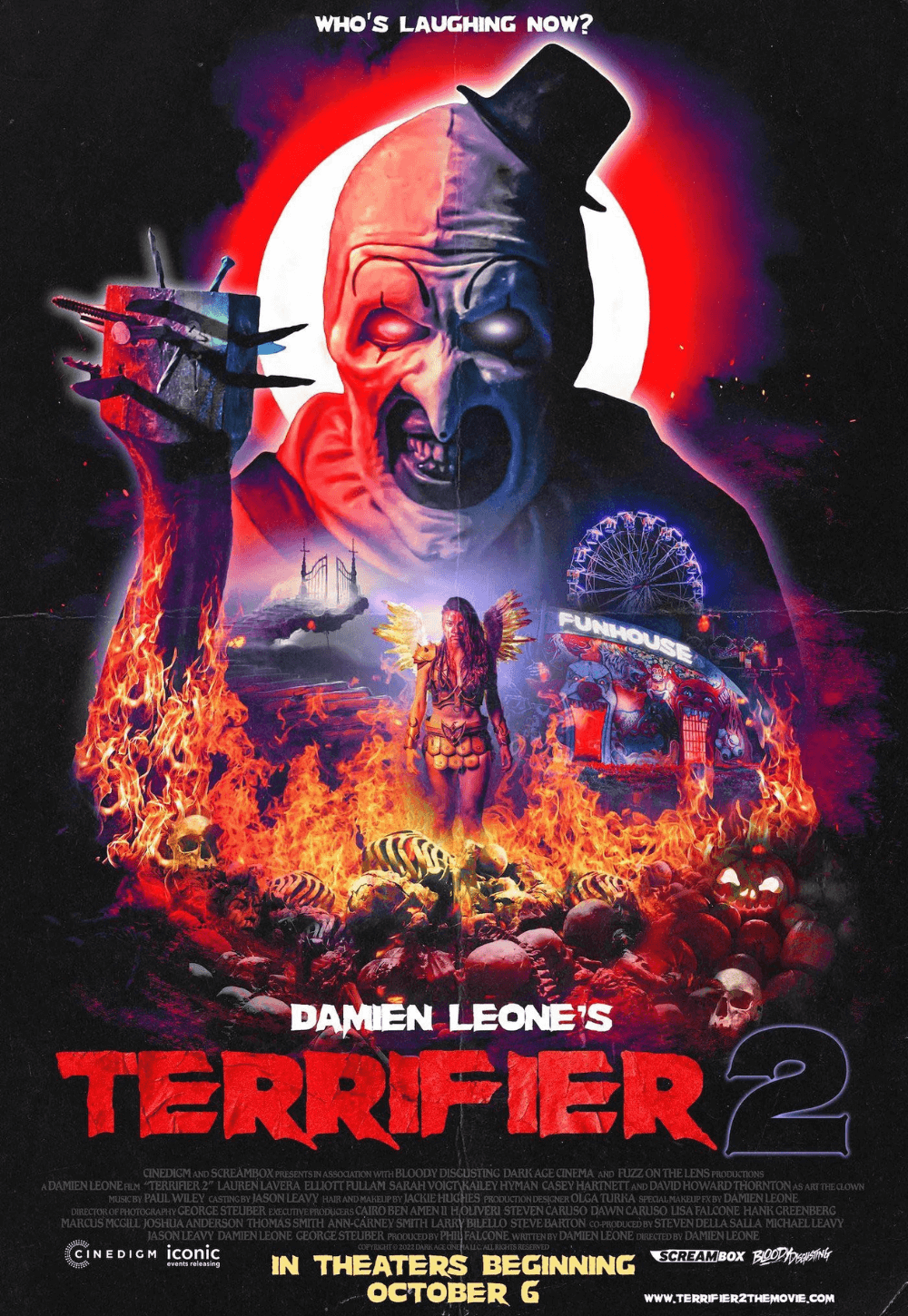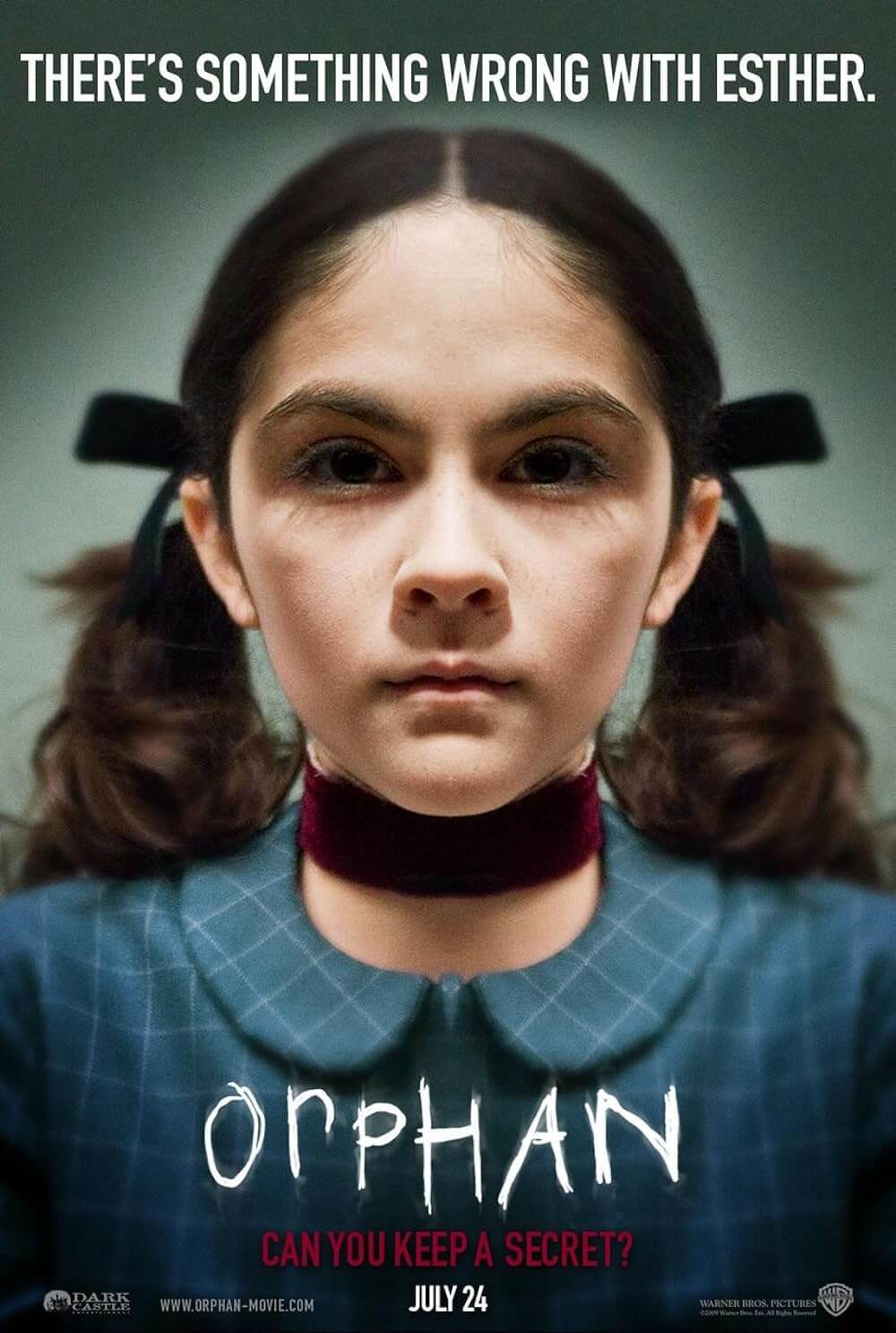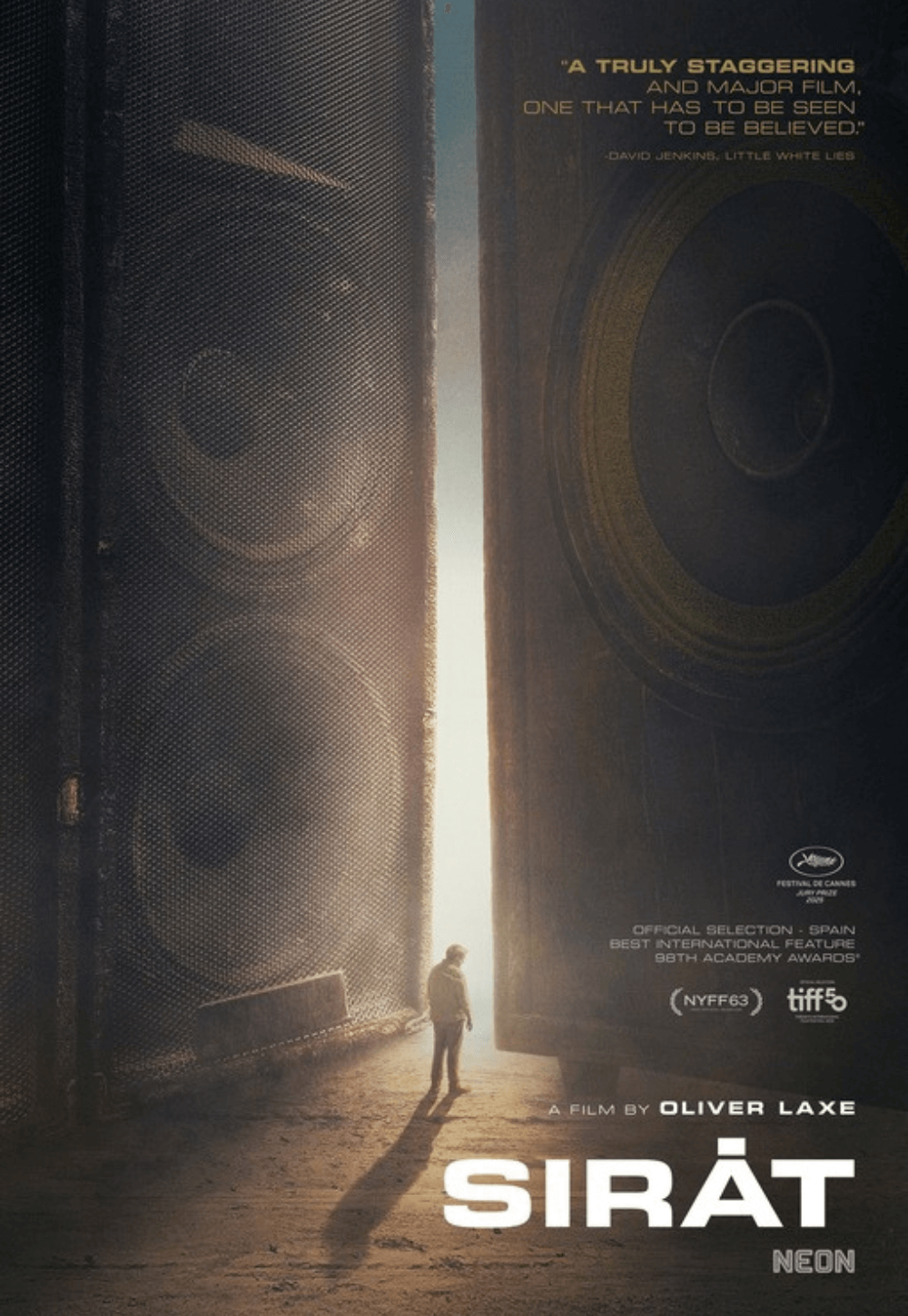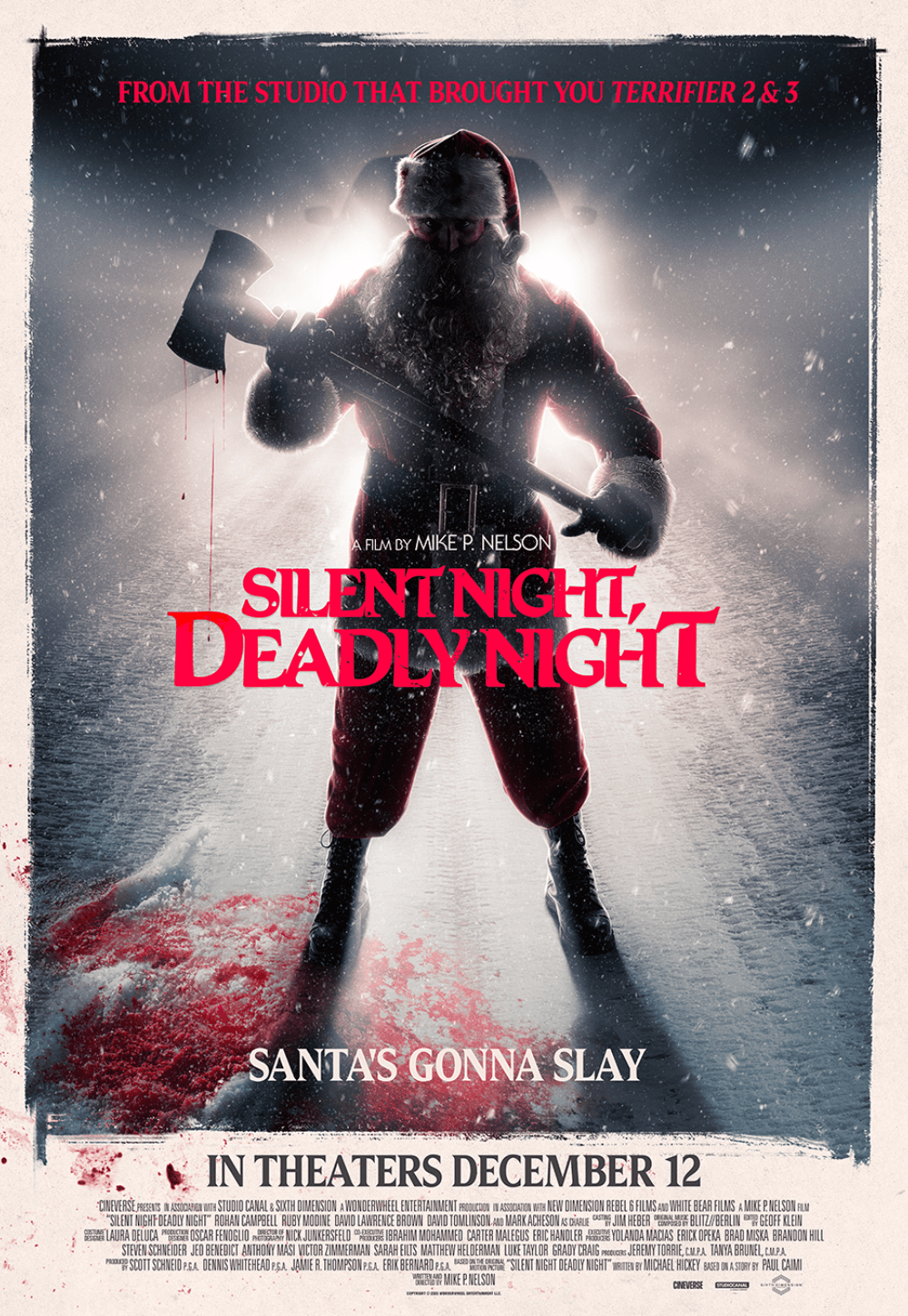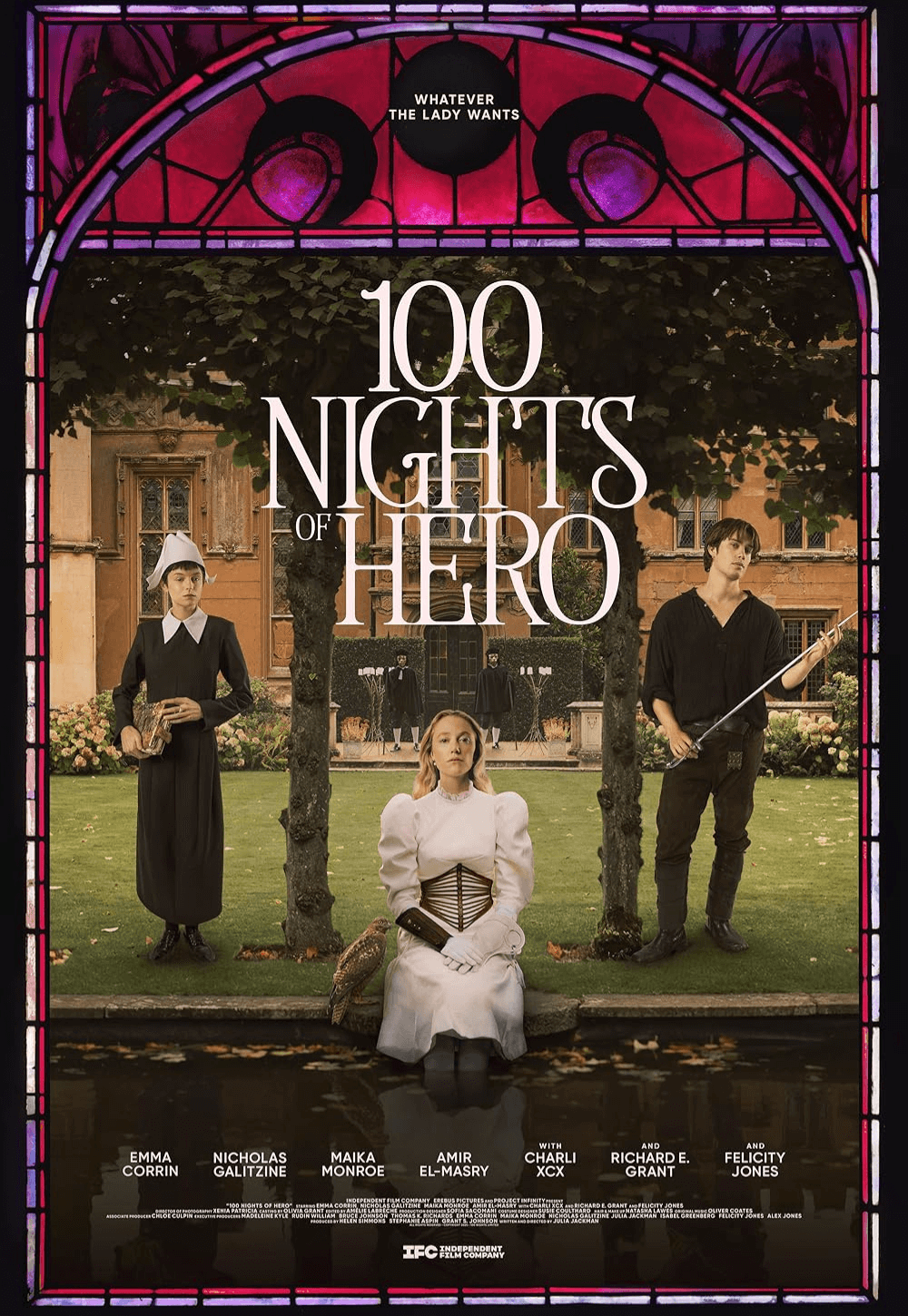Reader's Choice
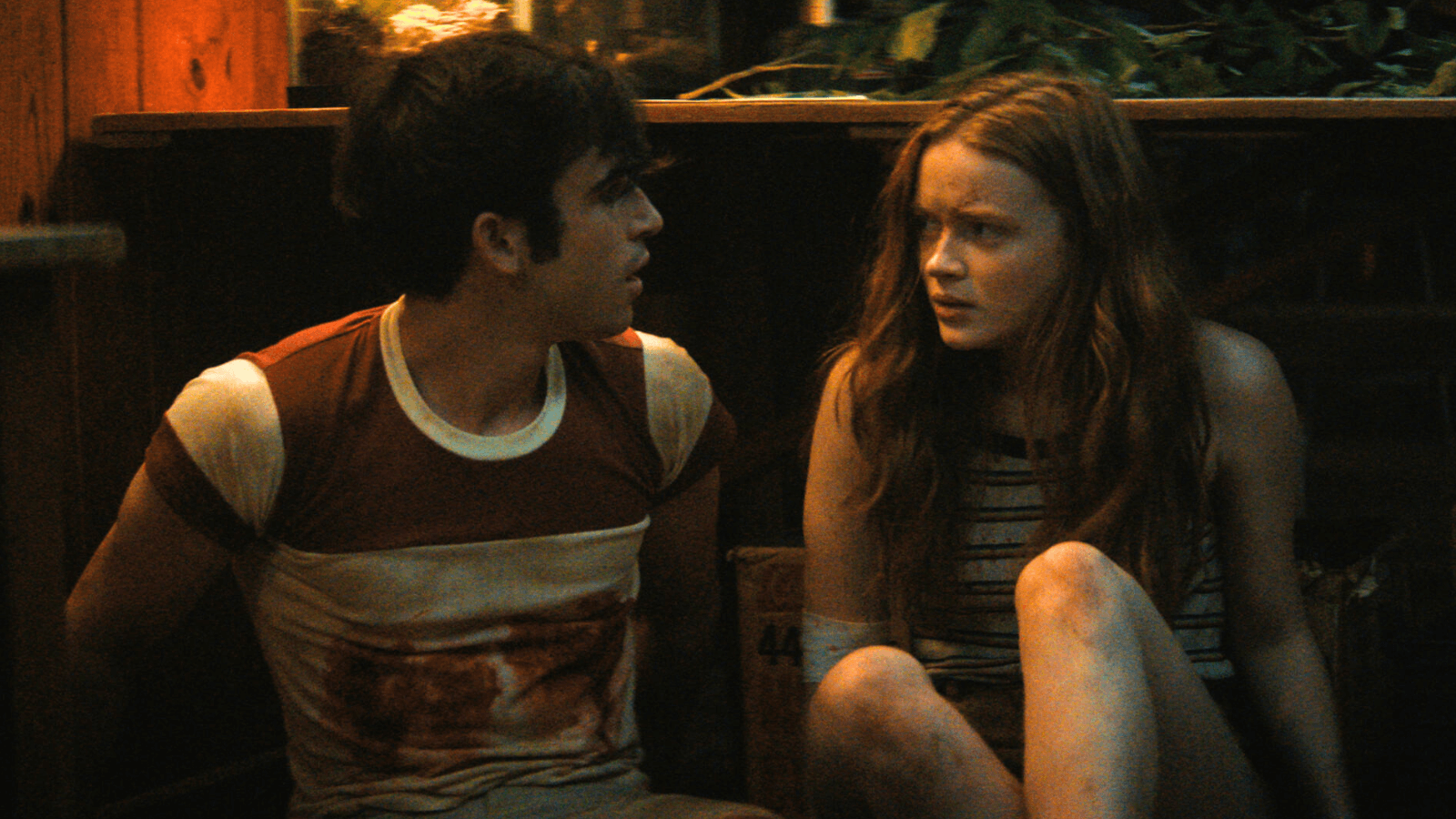
Fear Street Part Two: 1978
By Brian Eggert |
The second film in the Fear Street trilogy, 1978 might seem to have the thankless task of filling time before setting up the conclusion in 1666, where all questions are answered and conflicts resolved. Or, it might also be the most compelling of the three, opting for an Empire Strikes Back approach by offering a darker and more complex scenario. It’s a little bit of both: a sequel that underscores how the trilogy has three distinct features but also forms a complete saga with an overarching narrative, segmented according to the primary time period in which each chapter unfolds. In the middle part, director Leigh Janiak shows her versatility and genre love with a summer camp slaughterfest reminiscent of the Friday the 13th or Sleepaway Camp series, albeit with a late-1970s aesthetic steeped in browns and faded yellow hues. Armed with the same relentless pacing and penchant for gnarly deaths as its predecessor, 1978 is particularly bloody and brutal, but fortunately, it’s driven by compelling characters and actors, resulting in another hugely entertaining piece of throwback slasher horror, albeit more rooted in the overarching mythology this time.
Janiak and her fellow screenwriters Phil Graziadei and Zak Olkewicz pick up the story where 1994 left off, with survivors Deena Johnson (Kiana Madeira) and her brother Josh (Benjamin Flores Jr.) desperate to save Sam (Olivia Scott Welch), Deena’s girlfriend who has been possessed by Sarah Fier. That kitschily named colonial-era witch has placed a curse on Shadyside, the downtrodden town that serves as the dark yin to Sunnydale’s bright yang. Intent on breaking the curse to save their friend, they seek out C. Berman (Gillian Jacobs), a recluse with obsessive tendencies who survived Sarah Fier’s curse in 1978’s notorious “Camp Nightwing Massacre.” Paranoid, she keeps alarm clock reminders, has a row of locks on her front door, and drinks herself to sleep each night. She’s reluctant to help Deena and Josh when they come knocking, and she explains why when she spins a yarn about what happened in 1978, alluding that her sister died in the massacre. But which sister is Jacobs playing?
Flashing back to 1978, we meet the impetuous Ziggy (Sadie Sink, excellent), whose goody-two-shoes sister Cindy (Emily Rudd, also excellent) dreams of leaving Shadyside. But Ziggy knows there’s no escape and that the town is cursed. Her hometown disdain is justified when, in the opening scenes, Ziggy becomes the target of sadistic bullies led by Sheila (Chiara Aurelia), who proceed to hang Ziggy by the wrists on the town’s “Hanging Tree” and burn her with a lighter—at the same spot where Sarah Fier was allegedly killed. These ruthless teens, straight out of a Stephen King novel, are the first of many King homages. Later, the filmmakers evoke Carrie and the characters talk about the author’s various books. Thus continues the Fear Street series’ unabashed reference-machine quality, which, when combined with its typically wall-to-wall needle drops—from the usual ‘70s suspects: The Runaways, Blue Öyster Cult, Foghat, Cat Stevens, etc.—lends the feature a post-modern quality that can feel too dependent on the material that inspired it.
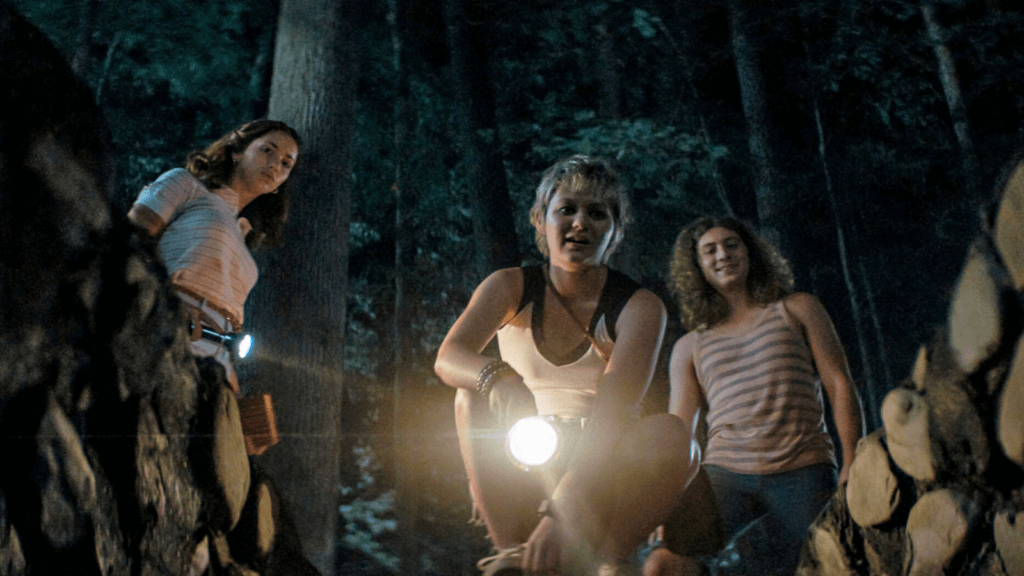
But Janiak and her editor Rachel Goodlett Katz maintain a blitz-like momentum, racing the viewer from one moment to the next in a hurried yet effective economy of storytelling. During a camp montage with recreational sports and preparation for the day’s capture-the-flag-style Color War, separated, of course, by Blue and Red, Shadyside and Sunnydale, we meet a familiar array of slobs and snobs: the horny drugged-up counselors, Alice (Ryan Simpkins) and Arnie (Sam Brooks); the elitist jock, Kurt (Michael Provost); the awkward nice guy, Gary (Drew Scheid); the future sheriff, Nick Goode (Ted Sutherland); and various other types. But once Ziggy visits the resident nurse, Mary Lane (Jordana Spiro), it’s clear Mary—whose possessed daughter Ruby murdered several teens before slashing her wrists—has something witchy compelling her. She tries to stab Cindy’s nice-guy boyfriend, Tommy (McCabe Slye), declaring that “One way or another, you’re going to die tonight.” Afterward, Tommy falls under the spell of Sarah Fier, and he becomes an axe-wielding maniac.
More than the trio of supernatural killers from 1994, Tommy’s relentless villain is terrifying, delivering a higher body count that primarily consists of young campers, which makes the violent deaths all the more shocking. Several innocent young children meet a grisly demise, punctuated by effective sound design that relays the convincing aural details of victims getting pummeled with an axe. Once the killing starts, Camp Nightwing becomes a claustrophobic space with too few places to hide, unlike the heroes of 1994 having a whole town in which to hide. At the same time, Cindy and Alice find themselves underground in tunnels beneath the camp—an occult site with the names of Sarah Fier’s possessed victims scratched into stone, and a huge, grotesque beating heart, teeming with flies and red moss. Down there, they find answers to what they believe might break the curse: restoring Fier’s severed hand with the rest of her body. But in the imminent future, they must crawl up through the camp’s outhouse (yuck) and survive Tommy’s brutal attacks.
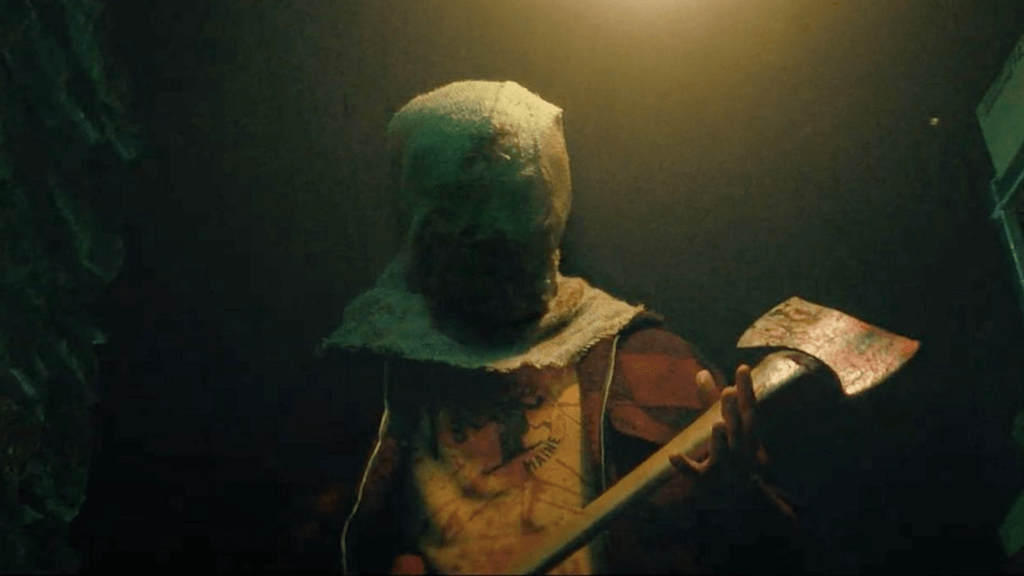
At the center of 1978 is a tender relationship between sisters Cindy and Ziggy, along with the question of which one of them will die, as foreshadowed by Jacobs’ character. Both Shadysiders remain stricken with their town’s curse, though Cindy’s character arc goes from denial and hope, along with a staunch disbelief in Sarah Fier’s influence, to being confronted with the reality of what’s happening beneath Camp Nightwing. By contrast, Ziggy’s cynicism and reckless abandon is fascinating to watch, like an unapologetic force of Nature who eventually stops resenting her sister. The scene where one of them dies is particularly difficult to watch, not only for the emotional tenor of the moment, but because Janiak doesn’t spare the viewer from the sheer graphic, bloody details, making the endearing character’s death all the more savage and horrifying. The scene might be the most anyone will feel during the entire Fear Street trilogy.
Accented by a superb score by Marco Beltrami and Brandon Roberts that propels the action, 1978 is more than just a middle entry that fleshes out the details, deepens the mythology, and leads to the resolution of 1666. The sequel’s air of doomed fatalism, given how its predecessor sets up the story as a hopeless installment, makes the characters more tragic and the situations more aching. Setting aside the story’s occasional plot holes or nonsensical choices, several moving reconciliations between friends and siblings bond the viewer to the material, while Janiak never skimps on the genre fun. To be sure, 1978 proves gorier and more barbaric than most of its influences, and certainly more watchable than the dunderheaded Friday the 13th series. It’s a rare thing to see a meta-inflected movie surpass those that influenced it, but Janiak’s skill as a director and storyteller elevates this series and delivers not only a satisfying chapter but also a vital component in the overall story.
(Note: This review was originally suggested and posted to Patreon on October 24, 2024.)
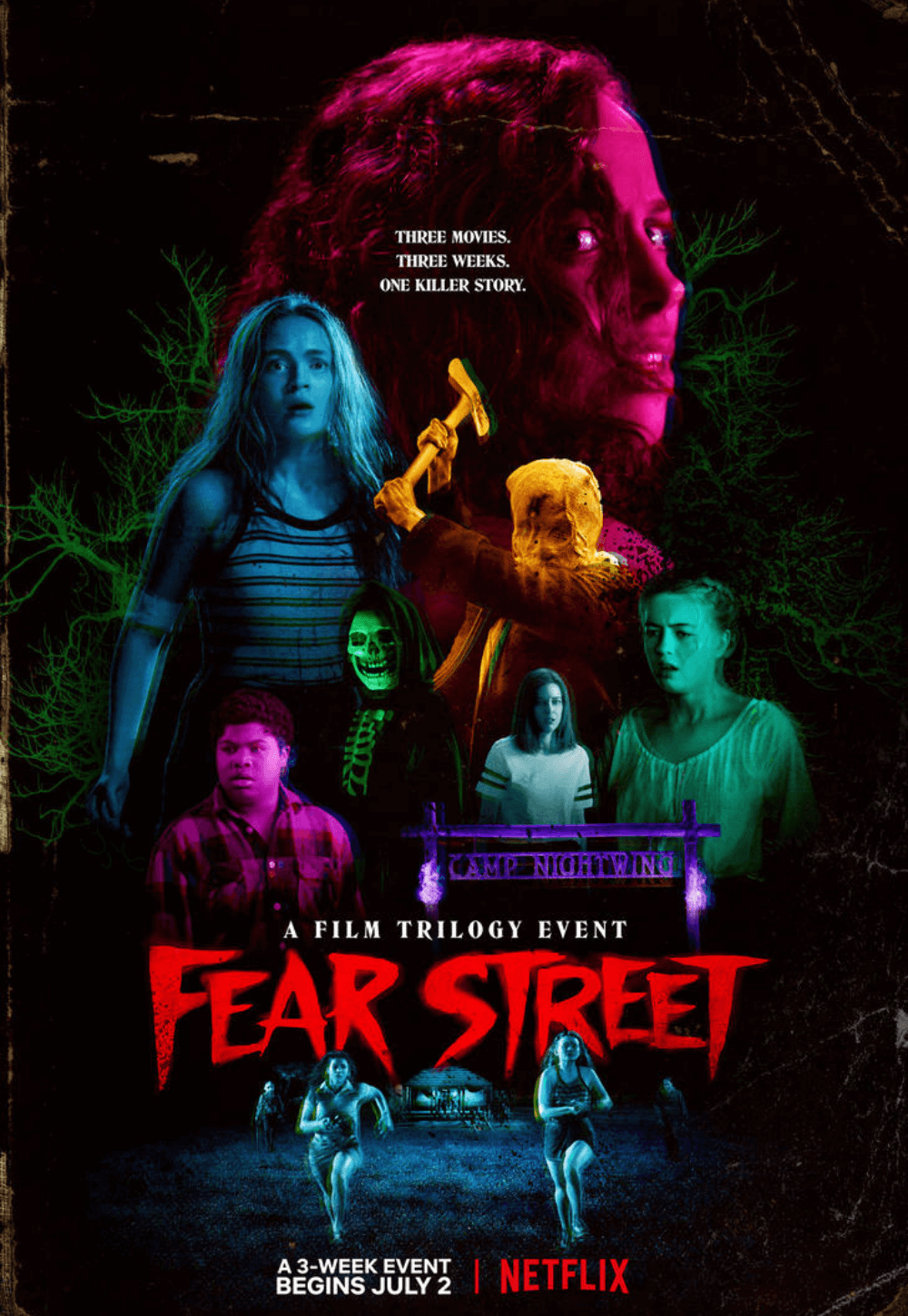
Thank You for Supporting Independent Film Criticism
Thank you for visiting Deep Focus Review. If the work on DFR has added something meaningful to your movie watching—whether it’s context, insight, or an introduction to a new movie—please consider supporting it. Your contribution helps keep this site running independently.
There are many ways to help: a one-time donation, joining DFR’s Patreon for access to exclusive writing, or showing your support in other ways. However you choose to support the site, please know that it’s appreciated.
Thank you for reading, and for making this work possible.
Brian Eggert | Critic, Founder
Deep Focus Review


